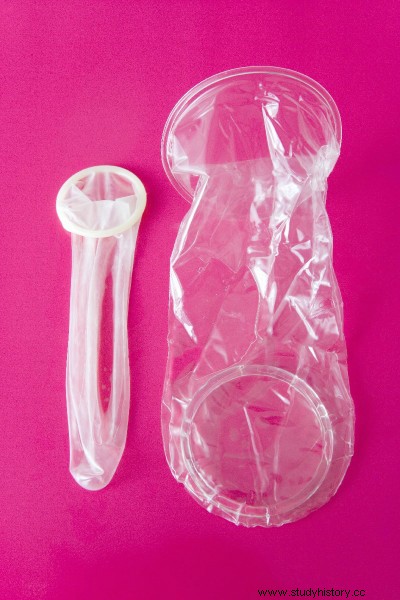
Posted as one of the great icons of the contemporary world, the condom or condom is one of the best known forms of contraceptive prevention existing in the world. In addition, the use of this same product is recommended by doctors in the prevention of several sexually transmitted diseases , including AIDS . In religious circles, we see that the use of condoms fuels a heated discussion about the place of sex among religious communities.
Despite so much notoriety, the condom is a kind of “ancient novelty” . More than three thousand years ago, the Chinese made a first version made from the combination of tissue paper and the application of lubricating oils . Also among them, we see the mention of female condoms made with products of plant origin. Among the Greeks, mythological and historical accounts speak of the use of fish swim bladders and the bladder of goats as a form of contraceptive method .
Between the Middle Ages and the Modern Age , we have the presence of some medical reports that recommended the use of penile wraps produced with linen . In addition to the tissue, the application of supposedly medicinal substances was recommended. Herb teas, wormwood, urine, sexual parts of animals were some of the strange ingredients suggested as a way to prevent syphilis , a disease that appears at that time with the names of “French disease” or “Neapolitan disease”.
InFrance From the 17th century, mentions about the use of condoms as a contraceptive method appear, but not with the intention of controlling the number of children in a family. The great concern of that time, whether for man or woman, was to avoid the financial and social misfortunes caused by controversial bastard children . Already at that time, condoms (made of velvet and silk) were sold clandestinely. After all, Church representatives already condemned the use of instruments that circumvented the reproductive ends of marital sex.
In the 18th century, the liberties of the French Revolution and the chaotic promises of Malthusian theory served for condoms to be manufactured and marketed on a larger scale. Throughout the 19th century, the discovery of the uses of rubber and the vulcanization process allowed condoms to be more resistant and malleable. However, some pharmacies at that time sold the product in a reusable form, with a five-year warranty.
In the first decades of the 20th century, war situations and condoms were in a fierce battle. In the 1920s, condoms were severely banned in French lands . The main objective of the measure was to recover the population devastated by the casualties of the First World War and the terrible epidemic of Spanish flu that ravaged the Old World. Europe needed to rebuild itself with the birth of new arms, so the condom was suspended .
In 1930, we have the manufacture of the first disposable condoms produced from the use of latex . In Europe, the novelty became a success. Unlike the United States, where production did not have the same impact on the consumer market. From the 1960s onwards, the unpopularity of condoms increased with the commercialization of birth control pills . With that, sexually transmitted diseases galloped until the late 1970s.
The triumph of the condom only happened in the following decade, when the action of the HIV virus forced thousands of people to bow to a new process of sex education. In the meantime, several fanciful theories aimed to dispense with the use of condoms, still considered by some as a limiting factor in the quality of the sexual act. However, we know that the preservation of life and health depends on this "old news".
